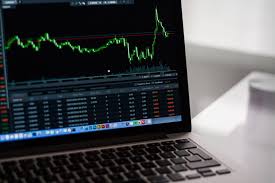In the first quarter of 2025, Nigeria’s economy recorded a year-on-year real GDP expansion of 3.13 percent, edging ahead of the previous year’s 2.27 percent but falling short of the 4.9 percent consensus expectation. This performance, while modest, offers a prism through which capital markets, both local and international are refracting Nigeria’s evolving investment narrative.
Behind the headline lies a recalibrated economic structure, made more visible by a recent rebasing of the national accounts using 2019 as the new base year. This methodological update raised nominal GDP to approximately ₦94.05 trillion, a striking 18.3 percent increase from the ₦79.5 trillion recorded in Q1 2024. The move has reframed sectoral contributions and enhanced visibility for growth engines such as digital services, fintech, creative industries, and the informal economy, while also producing a more favorable debt-to-GDP ratio reduced to 39.4 percent in Q1 2025, beneath the government’s 40 percent self-imposed threshold.
The services sector emerged as the primary driver of growth, contributing over 57 percent of real GDP. Telecommunications and information services stood out, with a 7.4 percent expansion in real terms and accounting for nearly 10.6 percent of GDP, reaffirming their role as pillars of the modern economy. Finance and insurance followed with a robust 15 percent surge, fueled by digital banking, broader financial inclusion, and fintech innovation. Trade, real estate, and transportation also expanded meaningfully, with the transport segment encompassing road, rail, air, water, and pipelines—seeing notable gains.
Industry, too, contributed to the growth narrative. The oil sector, however, underperformed, delivering a modest real growth of around 1.9 percent despite a slight rise in production to 1.6 million barrels per day. Manufacturing registered incremental gains, supported by momentum in sub-segments such as food and beverage, chemicals and pharmaceuticals, and cement. A dynamic construction sector continued to benefit from ongoing infrastructure investment, both public and private. Agriculture offered only marginal real growth, with crop production contributing minimally even as livestock and fisheries posted uneven performance.
The rebased GDP framework not only recast economic size but also reshaped fiscal ratios and investor perceptions. Nigeria’s debt-to-GDP ratio, now at 39.4 percent, signals improved sustainability, although the debt stock itself continues to increase. Fresh borrowings and exchange rate pressures widened debt in absolute terms, even as the enlarged GDP base reduced the relative burden.
These structural shifts are unfolding against a backdrop of capital flows and market activity. Q1 attracted significant net inflows in portfolio investments, indicating renewed investor interest in equities and tradable instruments. At the Nigerian Exchange, this sentiment was mirrored in a recovery of the All-Share Index by early August, restoring market capitalization to the region of ₦89 trillion and underscoring the potential for renewed capital market vibrancy.
Yet, these bright spots coexist with vulnerabilities. The economy remains burdened by persistent fiscal pressures, chronic foreign exchange volatility, high inflation, currency devaluation, and consumption weakness. Household spending continues to falter, raising questions about the strength and inclusivity of growth. Moreover, the overhang of external debt servicing, and budget rigidity where the majority of expenditure goes to debt servicing and overheads limits capacity for capital investments and development priorities.
For investors, the picture is compelling yet complex. There is tangible evidence of structural transformation: a modern services economy, digital financialization, reform-minded fiscal agencies, and a clearer macroeconomic frame. Yet macro risks and governance constraints persist. Offshore capital attuned to risk premiums now watches Nigeria’s reform momentum closely, seeking signals that fiscal discipline, debt sustainability, financial transparency, and inclusive growth are being delivered in tandem.
In the months ahead, the evolving narrative will hinge on whether structural progress can be buttressed with tangible institutional gains. Should public finance management become more disciplined, energy and infrastructure investments more efficient, and policy implementation more predictable, Nigeria stands poised to convert its latent strengths into a credible case for long-term investment.



